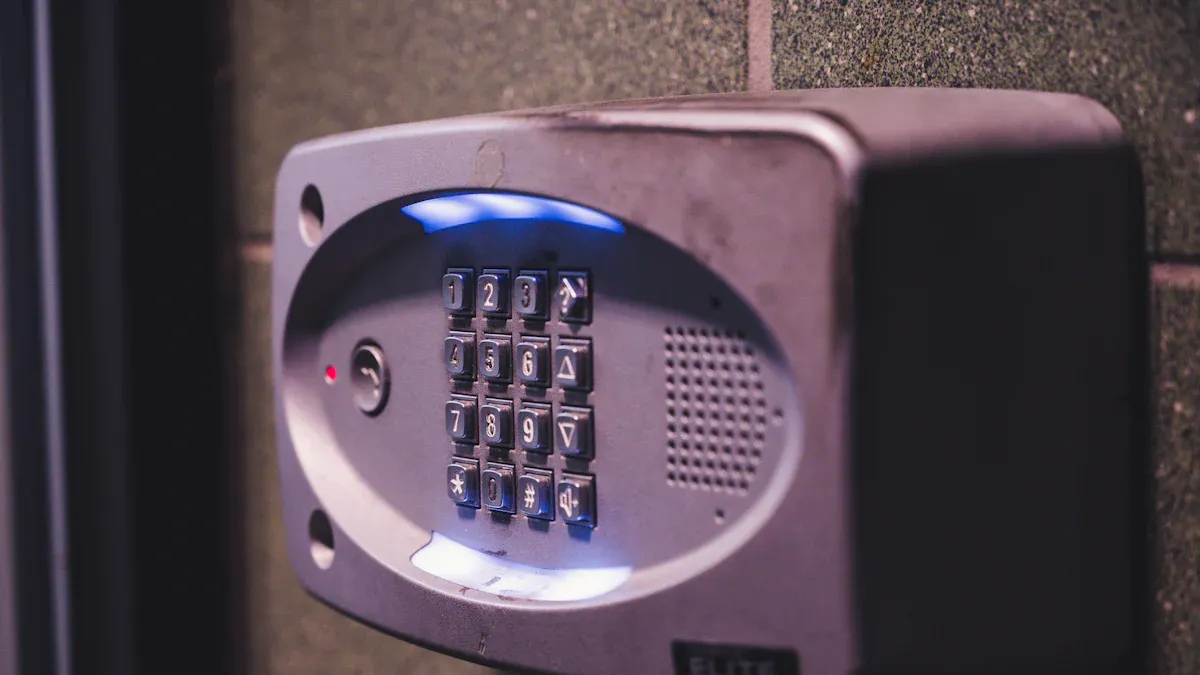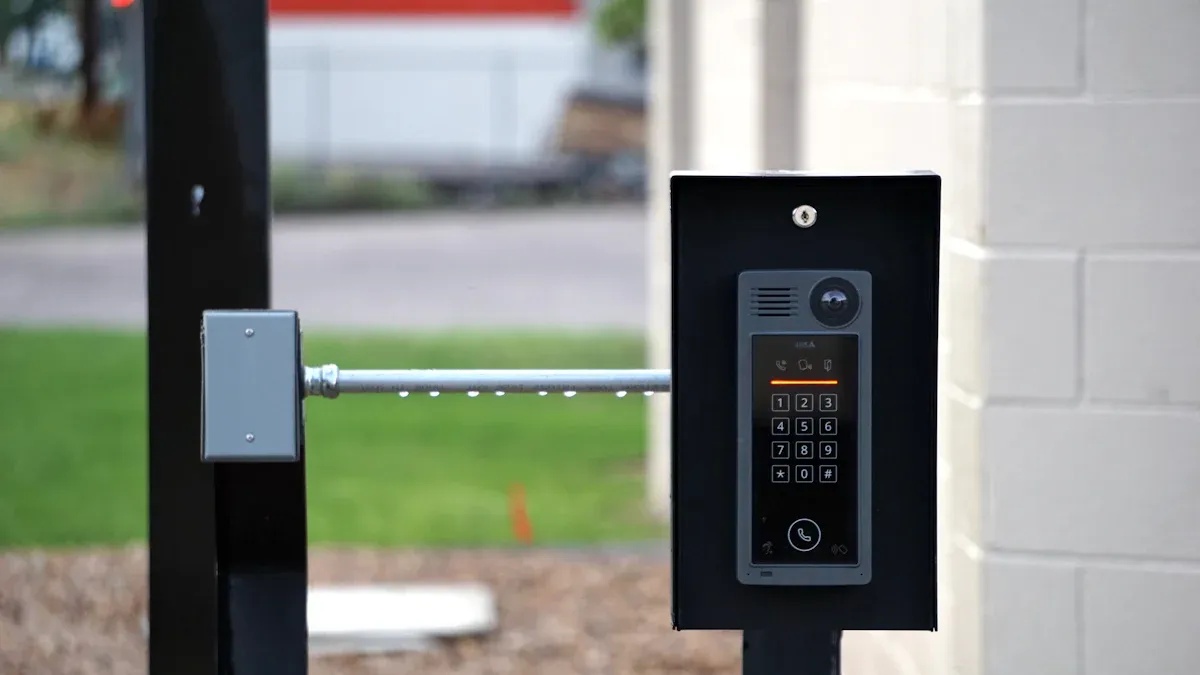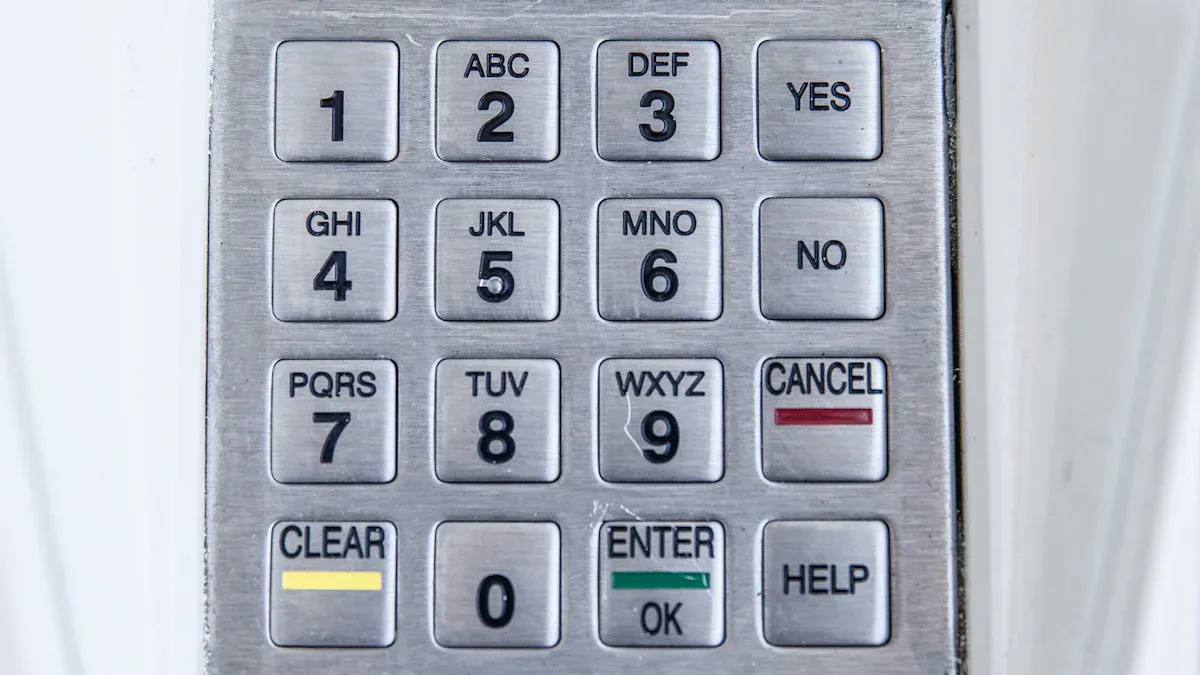
When it comes to securing access points, a stainless steel keypad is a reliable choice. These keypads are tough, durable, and designed to withstand heavy use. Whether you’re installing one for an industrial vending machine keypad, an ATM keypad, or even a vending machine keypad, the process is straightforward. Plus, their vandal proof keypad design ensures long-lasting performance in public or high-traffic areas. With the right tools and a little patience, you can set up a keypad that’s both functional and secure.
المداخل الرئيسية
- Get tools like a drill, screwdrivers, and a multimeter first. Being ready helps save time and avoids stress.
- Pick a bright and easy-to-reach spot for the keypad. If outside, make sure it is safe from bad weather.
- Clean and check the keypad often to keep it working well. Taking care of it can make it last longer and work better.
Preparation and Tools Needed

Essential Tools for Installation
Before you start, gather the tools you’ll need. Having everything ready will save you time and frustration. Here’s a quick list:
- Drill and drill bits: For creating mounting holes.
- Screwdrivers: Both flathead and Phillips types.
- Wire stripper and cutter: To prepare the wires for connection.
- Multimeter: To test electrical connections.
- Measuring tape: For accurate placement.
- Level: To ensure the keypad is mounted straight.
These tools are common and easy to find. If you don’t have them, check your local hardware store or borrow from a friend.
Materials Checklist
You’ll also need a few materials to complete the installation. Here’s what to have on hand:
- The stainless steel keypad you’re installing.
- Mounting screws or bolts (usually included with the keypad).
- Anchors, if you’re mounting on drywall or concrete.
- Electrical wires compatible with your access control system.
- A power supply unit, if required by the keypad.
- User manual or installation guide for reference.
Double-check this list before starting. Missing materials can delay your project.
Safety Guidelines to Follow
Safety should always come first. Here are some tips to keep in mind:
Tip: Turn off the power supply to the access control system before working with wires.
- Wear insulated gloves to protect yourself from electrical shocks.
- Use safety goggles when drilling to shield your eyes from debris.
- Keep your workspace clean and free of tripping hazards.
- Follow the manufacturer’s instructions for the stainless steel keypad.
Taking these precautions will help you avoid accidents and ensure a smooth installation process.
Step-by-Step Installation Process

Choosing the Right Location
Picking the perfect spot for your stainless steel keypad is crucial. Start by considering accessibility. The keypad should be easy to reach for all users. Avoid placing it too high or too low. Next, think about visibility. Install it in a well-lit area so users can see the keypad clearly, even at night. If the keypad will be outdoors, make sure the location is protected from harsh weather conditions like rain or direct sunlight. A small overhang or weatherproof cover can help. Lastly, ensure the spot is close to the access control system to minimize wiring distance.
Mounting the Stainless Steel Keypad
Once you’ve chosen the location, it’s time to mount the keypad. Use your measuring tape to mark the exact spot. Double-check that it’s level before drilling. If you’re mounting on drywall, use anchors to keep the keypad secure. For concrete or brick walls, you’ll need masonry screws or bolts. After drilling the holes, align the keypad and attach it using the provided screws. Tighten them firmly, but don’t overdo it—you don’t want to damage the keypad.
Wiring and Connecting to the Access Control System
Now comes the wiring. First, turn off the power supply to avoid any accidents. Use your wire stripper to prepare the wires. Follow the wiring diagram in the keypad’s manual to connect the wires to the access control system. Double-check each connection to ensure it’s secure. Once everything is connected, use a multimeter to test the electrical flow. This step ensures the keypad is ready to function properly.
Configuring the Keypad Settings
With the wiring complete, it’s time to configure the keypad. Refer to the user manual for specific instructions. You’ll likely need to set up user codes or access cards. Some keypads also allow you to adjust settings like backlight brightness or sound volume. Take your time with this step to ensure the keypad meets your needs. Once configured, test the settings to confirm everything works as expected.
Testing and Troubleshooting
Testing the Keypad Functionality
Once the installation is complete, it’s time to test your stainless steel keypad. Start by powering on the access control system. Enter a test code or swipe an access card, depending on the keypad’s setup. Watch for any response, like a beep, light, or door unlocking. If the keypad has multiple features, such as a backlight or sound alerts, check that these work as expected.
Tip: Test the keypad from different angles and distances to ensure it’s user-friendly for everyone.
If everything works smoothly, you’re good to go. If not, don’t worry—troubleshooting can help resolve most issues.
Troubleshooting Common Issues
Sometimes, things don’t go as planned. Here are a few common problems and how to fix them:
- Keypad not powering on: Double-check the wiring and ensure the power supply is connected.
- Unresponsive keys: Clean the keypad surface to remove dirt or debris.
- Incorrect responses: Verify the configuration settings in the user manual.
If you’re still stuck, try resetting the keypad to its factory settings. This often resolves software glitches.
Note: Always refer to the manufacturer’s troubleshooting guide for specific solutions.
When to Call a Professional
If troubleshooting doesn’t solve the problem, it might be time to call in an expert. Professionals can diagnose complex wiring issues or hardware defects. You should also seek help if the keypad is part of a larger security system that requires specialized knowledge.
Hiring a professional ensures your stainless steel keypad operates securely and reliably. It’s better to invest in expert help than risk compromising your access control system.
Maintenance Tips for Stainless Steel Keypads
Cleaning and Care
Keeping your stainless steel keypad clean isn’t just about looks—it’s also about functionality. Dirt and grime can build up over time, affecting the keypad’s responsiveness. To clean it, use a soft, damp cloth with a mild soap solution. Gently wipe the surface to remove smudges and debris. Avoid abrasive cleaners or scrubbing pads, as they can scratch the surface.
Tip: Use a microfiber cloth to prevent streaks and keep the keypad looking polished.
For tougher stains, a small amount of rubbing alcohol on a cotton swab works wonders. Make sure the keypad is completely dry before using it again.
Preventing Damage and Wear
A little care goes a long way in extending the life of your stainless steel keypad. Place it in a location that minimizes exposure to harsh weather or direct sunlight. If it’s outdoors, consider adding a protective cover.
Encourage users to press the keys gently. Excessive force can wear out the buttons faster. If the keypad is in a high-traffic area, inspect it regularly for signs of damage.
Note: Avoid using sharp objects like keys or pens to press the buttons. This can cause permanent damage.
Scheduling Regular Inspections
Regular inspections help you catch small issues before they become big problems. Check the keypad monthly for loose screws, worn-out buttons, or electrical issues. Test its functionality by entering a code or swiping an access card.
If you notice any problems, address them immediately. Tighten screws, clean the surface, or replace worn-out parts as needed. Keeping up with inspections ensures your keypad stays reliable and secure.
Installing a stainless steel keypad doesn’t have to be complicated. With the right tools and steps, you can set it up confidently. Regular maintenance keeps it working smoothly and extends its life.
Tip: Follow the guide closely, and don’t hesitate to seek help if needed. A secure keypad means peace of mind!
FAQ
What should I do if the keypad stops working?
First, check the power supply and wiring connections. If everything looks fine, reset the keypad using the instructions in the manual.
Tip: Regular maintenance can prevent unexpected failures.
Can I install the keypad outdoors?
Yes, but ensure it’s weatherproof or has a protective cover. Place it in a sheltered area to avoid direct sunlight and heavy rain.
How do I reset the keypad to factory settings?
Refer to the user manual for specific reset instructions. Usually, you’ll press and hold a combination of keys for a few seconds.
Note: Resetting will erase all saved settings and codes.


